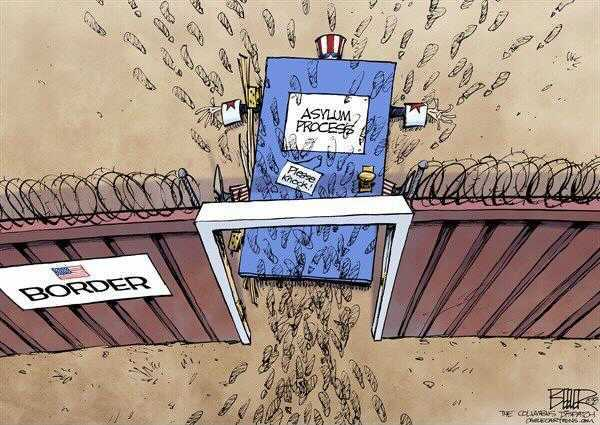Fact Check: The Realities of the U.S. Asylum Process
Contrary to common misconceptions about asylum being a way to circumvent “legal” immigration policies through visas and other statuses, asylum seekers follow an extensive legal application process to enter the United States.
The process of immigration to the United States through asylum requires an extensive review process. An asylum seeker is someone who has left their native country due to fear of persecution, war, or violence, seeking refuge in an objectively safer country. Former president Jimmy Carter first signed the U.S.Refugee Act of 1980 into law, which created a legal process for asylum seekers and refugees to immigrate to the United States permanently, if the application is approved. Over the past few years, there has been a growing false perception of asylum seekers due to confusion regarding the process used to grant asylum.
An asylum seeker actually must first cross a port of entry or airport and fill out a lengthy application to start the legal process. They then need to be fingerprinted at an appointment, along with any dependent parties such as children or spouses listed on the application. Next, asylum seekers must show proof of danger in their interviews to prove they have “credible fear” if they return to their home country. “Proof” can be considered a personal testimony and any further documentation, if they can be provided.
However, establishing credible fear is not an “easy way in''. Each interview is conducted by an asylum officer. If credible fear is found, the officer will refer the case to an immigration court, which will then make the final decision on the case. If an officer does not find credible fear, an asylee can request a review by an immigration court. If they’re denied again, the asylee can try to appeal but must show a change in circumstance that could affect eligibility.
The nationality of the asylum seeker plays a large role in whether or not they are granted asylum. Honduras, Mexico, and Guatemala lead in the countries with the most denied asylum cases, with approval rates from 12.7% -15% . In stark contrast, Chinese applicants have an approval rate of 76.7% and Indian applicants have an approval rate of 62.0%. Overall, in 2020 the rate of denied asylum applications was 73.7%. The claim that asylum seekers are using loopholes to enter America is FALSE.
Got false information you want to share with us or something to fact-check?
References and Further Reading:
TRAC Immigration. Asylum Denial Rates Continue to Climb. 28 October 2020.
Immigration Equality. Asylum Manual - Elements of an Immigration.
Ryan Baugh. Department of Homeland Security. Refugees and Asylees: 2019. September 2020.
U.S Citizenship and Immigration Services. Questions and Answers: Appeals and Motions. 21 January 2021.
U.S Citizenship and Immigration Services. Questions and Answers: Asylum Eligibility and Applications. 16 September 2021.




